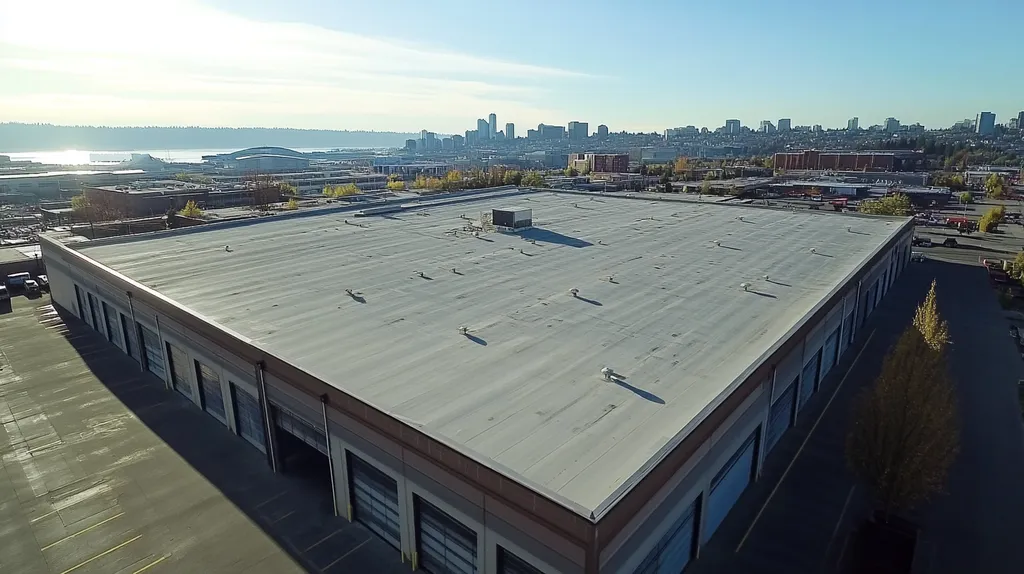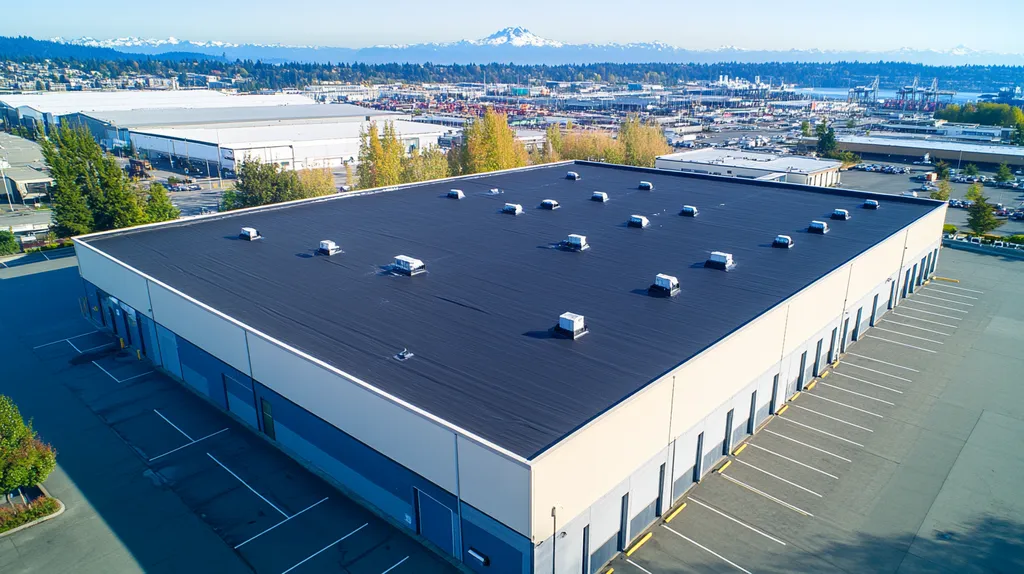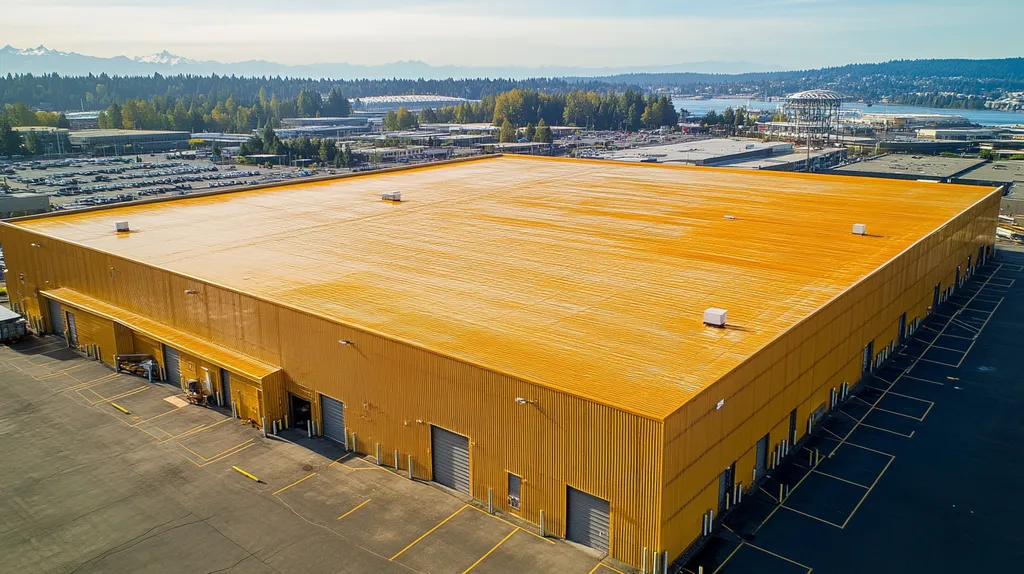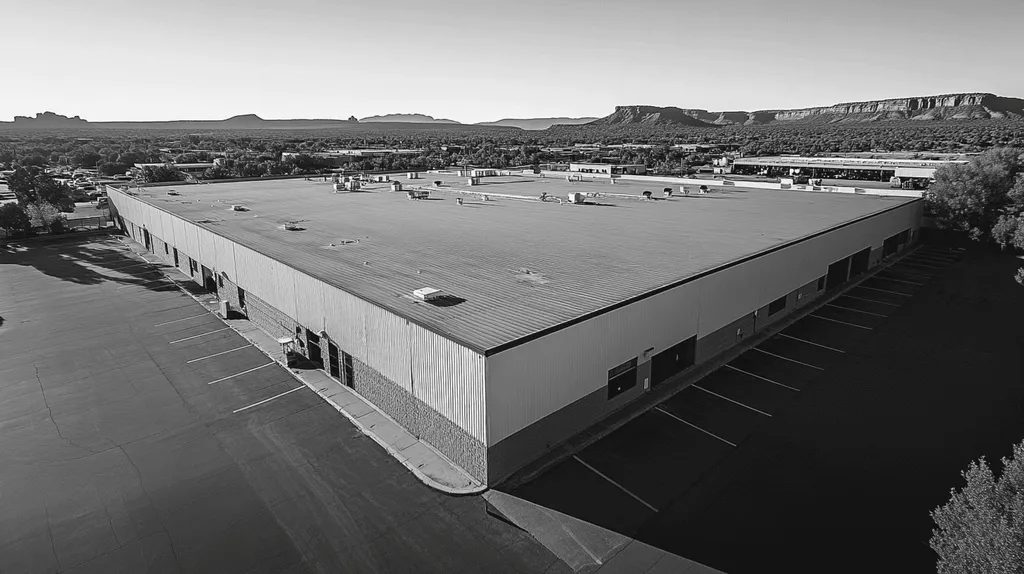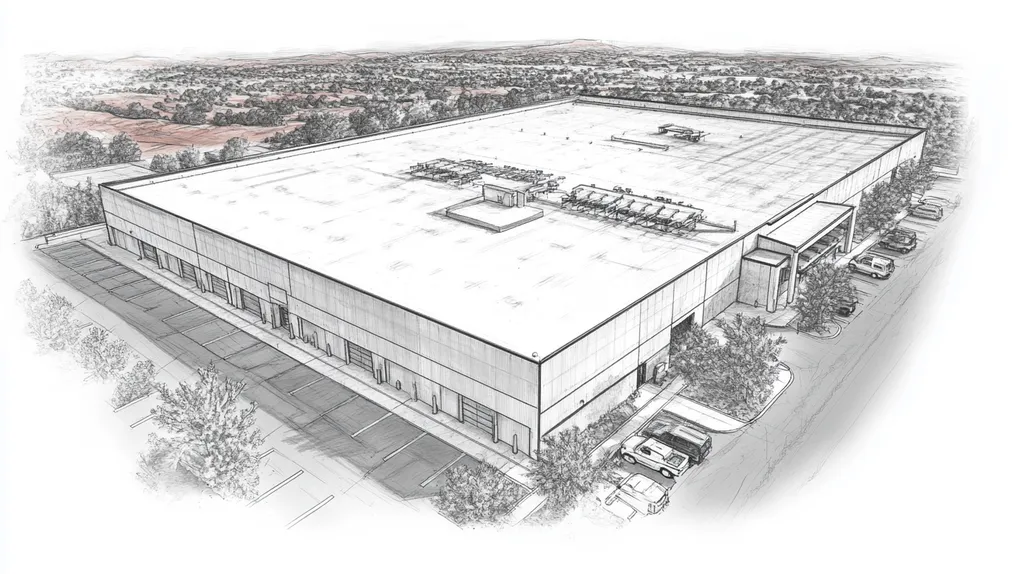Nearly 40% of commercial roof failures stem from improperly installed or maintained rooftop equipment, resulting in billions in annual repair costs across North America.
For facility managers, the mounting pressure to maximize rooftop space for HVAC systems, solar installations, and other equipment creates unprecedented challenges for roof system durability.
This comprehensive guide examines critical factors affecting roof performance, from structural considerations to compliance requirements, providing actionable solutions to protect both equipment investments and roof integrity.
SECTION 1: PERFORMANCE FACTORS
The installation of rooftop equipment is often an underappreciated aspect that heavily influences the durability of commercial roofs. Alarmingly, around 25% of commercial roof failures stem from equipment-related issues. Therefore, it is crucial for facility managers to prioritize roof integrity to avoid expensive repairs and ensure reliable long-term performance. This section delves into how rooftop equipment impacts membrane integrity, the importance of proper load distribution, and the challenges that come with equipment penetrations.
Impact of Rooftop Equipment on Roof Membrane Integrity
Rooftop equipment exerts considerable stress on a roof’s membrane integrity. Each unit adds weight, which can lead to localized damage if not carefully managed. Such pressure can result in tears, punctures, or other failures, particularly if the roof membrane isn’t designed for these additional loads.
Assessing the capabilities of roofing materials is vital. For instance, single-ply membranes may not endure heavy loads as well as modified bitumen systems. Therefore, facility managers must carefully evaluate the equipment being installed and its possible risks to the roof membrane.
Moreover, maintenance practices should be adapted to accommodate rooftop equipment. Regular inspections are essential for early identification of wear and tear, allowing for timely interventions that preserve membrane integrity. Clear communication with roofing specialists can provide crucial insights and help avert potential damage.
Key Action Items
Assessing Load Distribution and Structural Support Needs
Proper load distribution is essential when installing rooftop equipment. The roofing structure must be capable of bearing additional weight to ensure safety and longevity. Miscalculations in load management can lead to structural issues that compromise the overall integrity of the roof.
Signs of a roof under stress include visible sagging or unusual wear patterns. Facility managers should conduct thorough assessments before equipment installation to identify reinforcement needs in vulnerable areas. Often, employing load distribution supports can significantly reduce risks.
Collaborating with architects or structural engineers can be invaluable. They provide insights based on current building codes and equipment-specific load requirements. A proactive approach to load management not only extends the roof’s life but also saves facilities time and money in the long run.
Key Action Items
Effects of Equipment Penetrations on Waterproofing Systems
Equipment penetrations present a formidable challenge to maintaining a roof’s waterproofing system. Each penetration introduces a potential weak point where water can infiltrate the structure, leading to leaks and extensive damage to both the roof and the building’s interior.
It is essential to ensure that penetrations are sealed correctly during installation. Utilizing high-quality sealants that withstand harsh weather conditions can greatly enhance waterproofing capabilities. Routine maintenance checks are necessary to confirm that the seals remain intact over time.
Furthermore, educating maintenance personnel on the importance of monitoring these penetrations can bolster roof protection. Swiftly addressing any wear or deterioration can prevent more significant issues down the road. A comprehensive understanding of waterproofing challenges helps facility managers make informed decisions that are crucial to the roof’s longevity.
Key Action Items
SECTION 2: FINANCIAL CONSIDERATIONS
The financial aspects of rooftop equipment installation go far beyond just initial setup costs. Poor planning can trigger serious roof damage, leading to costly repairs and disruptions. Studies have shown that over 30% of commercial roofs sustain damage from improperly installed equipment, resulting in unexpected expenses that can reach thousands of dollars. For facility managers, grasping the financial implications in this area is imperative.
Cost Implications of Roof Damage from Equipment Installation
Installing rooftop equipment often puts considerable strain on commercial roofs. Heavy machinery and HVAC systems can cause significant stress on roofing materials, which increases the risk of leaks and structural deterioration. Repairing a single leak can cost between $500 and $1,500, and expenses can skyrocket with repeated issues.
Additionally, water intrusion can lead to interior damage that compounds repair costs. Interior water damage might result in additional expenses ranging from $2,000 to $10,000, depending on severity. Understanding these hidden costs is crucial when budgeting for roof damage.
Facility managers must recognize how initial equipment installation decisions have lasting financial consequences. By understanding these costs, they can effectively budget for preventative measures and avoid expensive repairs down the line.
Key Action Items
Budgeting for Preventative Maintenance and Repairs
A well-thought-out budget for roof maintenance is key to controlling costs arising from rooftop equipment installation. Implementing a routine inspection schedule allows facility managers to uncover issues before they evolve into substantial repairs. Routine maintenance typically incurs costs that are significantly lower compared to emergency repairs.
For instance, promptly fixing a small leak can cost around $500, while undetected problems might require far larger investments. Establishing a dedicated budget for both scheduled maintenance and unforeseen repairs is critical for effective fiscal management.
It’s also prudent to set aside funds for roof reinforcements when adding equipment. Though this requires upfront investment, it greatly increases the roof’s lifespan while preventing damage from additional stress. Engaging professional roofers for maintenance checks can ensure optimal allocation of budgets and improve overall roof longevity.
Key Action Items
Evaluating Return on Investment for Roof Reinforcement
Assessing the return on investment (ROI) for roof reinforcement is critical for sound financial planning. While methods like adding extra ply layers or support structures may seem expensive upfront, they often lead to significant savings over time. These precautions can prevent severe damage and hefty repair bills.
For example, investing $5,000 in roof reinforcement to accommodate heavy equipment might save $15,000 or more in potential upgrades and repairs. Research indicates that well-maintained and reinforced roofs can last up to 50% longer than those that are merely reactive.
An effective ROI evaluation process compares immediate costs against potential future savings. Facility managers should consider the lifespan of new equipment and its operational duration in the facility, positioning them to make more strategic investment decisions.
Key Action Items
SECTION 3: COMPLIANCE REQUIREMENTS
Compliance with regulations is a crucial element in ensuring the durability and safety of commercial roofs. Ignoring building codes can lead to significant repair costs, reduce the lifespan of roofing systems, and pose safety risks. According to the National Roofing Contractors Association (NRCA), adhering to local codes is essential; violations could result in fines as well as increased liability during accidents.
Understanding Building Codes for Roof Equipment Installations
Building codes dictate how rooftop equipment must be installed and supported on commercial roofs. These regulations can differ significantly by location and generally encompass requirements for structural integrity, drainage, and fire safety. Facility managers need to understand these rules thoroughly to prevent complications down the line.
In some areas, municipalities mandate additional structural support for heavy equipment installations like HVAC units. Non-compliance could result in structural failures, putting both the equipment and the safety of building occupants at risk. Engaging local building authorities during the planning phase is vital for ensuring compliant and sustainable installations.
Periodic reviews of local codes, especially during roof system expansions or modifications, are a proactive strategy. Collaborating with qualified roofing contractors can yield insights about any upcoming changes in regulations, ensuring that installations are compliant and built for longevity.
Key Action Items
Meeting Manufacturer Warranty Conditions for Roof Systems
Manufacturer warranties play a vital role in the longevity of roof systems. However, improper rooftop equipment installation can nullify these warranties. Typically, manufacturers require that all fixtures are installed according to specific guidelines to protect the roof’s integrity.
For instance, many roof manufacturers state that penetrations must be properly sealed and flashed. Forward-thinking facility managers account for these warranty terms during rooftop installations, safeguarding their roofing investment.
Not adhering to warranty conditions can lead to severe financial consequences. If a leak arises from poor installation, manufacturers may reject claims, leaving building owners with repair bills. This emphasizes the necessity of aligning installation practices with manufacturer specifications.
Thorough documentation of all installations is essential. This can serve as evidence to support warranty claims in case of issues. Ensuring compliance with warranty conditions protects investments in roofing systems.
Key Action Items
Ensuring OSHA and Safety Standards in Rooftop Work
Compliance with OSHA regulations during rooftop equipment installation is not optional; it is a critical safety measure. These standards exist to minimize risks for workers, and failing to follow them can have dire consequences.
For example, OSHA mandates the use of personal fall protection when working on roofs to mitigate injuries. Organizations that disregard these guidelines face not only hefty fines but also an increased risk of accidents. Facility managers must prioritize safety by ensuring proper training is provided.
Implementing best safety practices protects employees and enhances installation efficiency. Supplying adequate safety equipment and guidance reduces downtime and fosters a safer work environment. This proactive approach is essential for any facility manager aiming for compliance.
Furthermore, conducting scheduled safety audits during installation phases can help ensure adherence to safety standards. Regularly reviewing safety protocols reinforces a commitment to worker safety and operational integrity.
Key Action Items
SECTION 4: RISK MANAGEMENT
Facility managers face significant pressure to maintain roof integrity, especially after installing rooftop equipment. Almost 20% of commercial roof failures arise from improper equipment placement. Identifying these risks is essential for safeguarding roof durability and protecting valuable assets. This section will cover how to recognize potential risks, the importance of regular inspections, and the development of contingency plans.
Identifying Roof Failure Risks Linked to Equipment Placement
Rooftop equipment, like HVAC units and solar panels, introduces specific risks that can lead to roof failure. Improper placement or insufficient support may create uneven weight distributions, resulting in sagging or punctures in the roof material. Early recognition of these risks is critical for preserving roof performance.
Rooftop installations can also block drainage systems, causing water pooling. This blockage increases the risk of leaks and significant damage. Facility managers should collaborate with roofing professionals to determine the optimal positions for new equipment to mitigate these risks.
Understanding the structural limitations of the roof is equally important. Each roof type has different capacities for weight and stress. Assessing these limits allows informed decisions regarding the installation or relocation of equipment, which can prevent future problems. Documenting and communicating all identified risks to relevant stakeholders is a proactive strategy that helps in averting roof failures.
Key Action Items
Inspecting and Monitoring Roof Stress Points Regularly
Regular inspections of roof stress points are vital to manage risks effectively. Increased foot traffic around rooftop equipment can create wear and tear that might not be immediately noticeable. Facility managers should plan routine inspections following any new installations or major roofing work.
Utilizing advanced tools, like drones or professional inspectors, can offer a comprehensive view of the roof’s condition. This method identifies potential issues that require urgent action, allowing for tailored maintenance strategies based on observed stress points.
Keeping detailed records of inspections and findings enables managers to track the roof’s wear patterns over time. This documented history aids in making informed decisions about future maintenance or additional installations. Proactive inspections can help avoid costly roofing issues down the line.
Key Action Items
Developing Contingency Plans for Roof Leak or Damage Events
Despite best efforts, leaks or damage can occur unexpectedly, making contingency planning essential. Facility managers should outline clear steps for response in case of a roofing emergency.
A critical part of this plan includes having reliable contacts, such as roofing contractors and insurance representatives, readily available to streamline response efforts during a crisis. Quick access to this information can minimize the impact of roofing issues.
Regular training sessions for staff on emergency procedures enhance readiness and ensure everyone knows how to respond effectively. Additionally, having temporary covers or sealing solutions on-site helps protect interiors from water damage until permanent repairs are implemented.
Key Action Items
SECTION 5: OPERATIONAL PROCEDURES
Effective operational procedures are crucial for the longevity and durability of commercial roofs when it comes to rooftop equipment. Poor coordination among contractors can lead to significant damages and escalating repair costs. For example, inadequate sealing around freshly installed HVAC units can lead to water intrusion, creating structural problems and potentially voiding warranties. This section highlights the necessity for clear collaboration between contractors and the importance of thorough documentation.
Coordination Between Roofing and Mechanical Contractors
Coordination between roofing and mechanical contractors is essential to prevent costly errors. Both teams need to align their work schedules and communicate effectively to prevent disruption. For instance, if HVAC units are installed without consulting the roofing team, it can lead to damaging the roof membrane.
Establishing clear communication from the outset is vital for addressing potential conflicts and ensuring compliance with project requirements. Regular meetings can help keep everyone on the same page and minimize mistakes that could compromise roof integrity.
Additionally, creating a shared project plan is wise. This plan should delineate responsibilities, timelines, materials, and methods, which helps maintain accountability and focus on safeguarding roof durability during installations.
Key Action Items
Sequencing Installation and Maintenance Activities
The order in which installation and maintenance activities are scheduled can significantly affect a roof’s durability. Proper planning prevents prolonged exposure of roofing materials to damaging conditions. For instance, scheduling substantial repairs during rainy seasons increases the risk of water damage and materials deterioration.
Installing equipment during mild weather conditions minimizes risks linked to extreme temperature fluctuations and severe weather events, which can compromise the roofing materials.
Adopting a proactive maintenance approach also helps. Regular inspections and prompt repairs can identify issues before they worsen. For example, ensuring clear drainage pathways prevents water pooling, thereby reducing leak risks.
Key Action Items
Documenting Inspections and Repairs for Accountability
Thorough documentation of inspections and repairs is foundational for maintaining a resilient roof. A well-maintained log allows facility managers to track the roof’s condition over time. This accountability is crucial for resolving warranty claims or addressing insurance matters.
Documentation must include inspection dates, detailed descriptions of any findings, and actions taken. Transparency throughout this process fosters an understanding of the roof’s maintenance history and ongoing needs.
Moreover, regularly updated records serve as a valuable learning resource for facility managers to analyze the impacts of prior maintenance efforts on roof performance, informing future decisions.
Key Action Items
SECTION 5: OPERATIONAL PROCEDURES
Effective operational procedures are vital for maintaining the durability of commercial roofs in the context of rooftop equipment installations. The consequences of poor coordination among contractors can be severe, leading to significant damage and escalating repair costs. For example, if HVAC units are not adequately sealed upon installation, it can result in water intrusion, compromising roof integrity and potentially voiding warranties. This section underscores the importance of collaboration among contractors and the necessity of meticulous documentation.
Coordination Between Roofing and Mechanical Contractors
Effective collaboration between roofing and mechanical contractors is essential to prevent costly oversights. Both teams need to align schedules and communicate effectively to minimize disruptions. For instance, installing HVAC units without consulting the roofing team can inadvertently damage the roof membrane, leading to future leakage issues.
Establishing clear communication before work begins is key. Regular meetings should be held to identify possible conflicts and ensure everyone understands project requirements. This proactive approach reduces the likelihood of errors that could jeopardize the roof’s integrity.
Creating a shared project plan that outlines roles and responsibilities, timelines, and installation methods can further promote accountability among teams. When all parties are aware of their duties, safeguarding the roof’s durability becomes a collective effort.
Key Action Items
Sequencing Installation and Maintenance Activities
The order of installation and maintenance activities is crucial for enhancing roof lifespan. Strategic planning prevents excessive exposure of roofing materials to damaging conditions. For instance, performing major repairs during rainy seasons can lead to water infiltration and deterioration of roofing components.
Installing rooftop equipment during mild weather is ideal, as it minimizes risks linked to temperature fluctuations and severe weather events that can damage materials. Taking advantage of favorable conditions helps ensure the integrity of the roofing structure.
Implementing a proactive maintenance strategy also helps in early problem detection. Regular inspections and prompt repairs can identify and mitigate issues before they escalate. For example, ensuring clear drainage pathways helps reduce the risk of water pooling and subsequent leaks.
Key Action Items
Documenting Inspections and Repairs for Accountability
Comprehensive documentation of inspections and repairs is fundamental for maintaining roof durability. A detailed log enables facility managers to monitor the roofing system’s condition over time, which is crucial for warranty claims and insurance matters.
Records should include inspection dates, descriptions of any issues found, and steps taken to resolve them. This transparency offers a thorough understanding of the roof’s maintenance history and ongoing needs.
Furthermore, regularly updated documentation allows facility managers to evaluate how past maintenance efforts have affected roof performance, facilitating better decision-making for future projects. A systematic approach to record-keeping not only promotes accountability among contractors but also creates a roadmap for continued maintenance efforts.
Key Action Items
The Bottom Line
With 40% of commercial roof failures stemming from equipment-related issues, facility managers cannot afford to overlook the critical relationship between rooftop installations and roof durability.
The mounting pressure to maximize rooftop space for HVAC systems, solar panels, and other equipment continues to challenge even the most robust roofing systems.
Success requires a comprehensive approach: strict adherence to installation protocols, regular monitoring of stress points, and maintaining clear documentation of all rooftop activities.
Forward-thinking facility managers who implement the strategies outlined in this guide can extend roof lifespans by 30-50% while protecting their equipment investments.
The cost of inaction – both in terms of repairs and potential equipment damage – makes proactive roof management not just advisable, but essential for modern commercial facilities.
FREQUENTLY ASKED QUESTIONS
Q. How does rooftop equipment affect commercial roof durability?
A. Rooftop equipment adds weight and stress, potentially damaging roof membranes and leading to failure. Proper load distribution and regular maintenance are essential for durability.
Q. What financial risks should I consider for my industrial roof?
A. Hidden repair costs from water damage can accumulate quickly, making it vital to budget for maintenance. It’s crucial to forecast both immediate and future expenses related to roof durability.
Q. What building codes are relevant for rooftop equipment on commercial roofs?
A. Local building codes define installation guidelines for rooftop equipment, including structural support and safety requirements. Consultation with local authorities is essential for compliance and safety.
Q. How can I identify risks from rooftop equipment placement?
A. Evaluate weight distribution and drainage impacts from rooftop units to detect risks. Collaborate with professionals to ensure equipment placement supports roof integrity effectively.
Q. What operational procedures promote commercial roof durability?
A. Effective coordination between contractors and meticulous documentation are vital for maintaining integrity. Scheduled communication and clear project plans prevent costly oversights during installations.
Q. How often should I inspect my commercial roof?
A. Regular inspections should be scheduled following installations, major repairs, or weather events. Frequent monitoring identifies potential issues before they escalate, protecting the roof’s longevity.
Q. What materials are best for waterproofing rooftop penetrations?
A. High-quality sealants that resist harsh weather are essential for ensuring waterproof penetrations. Proper sealing practices are critical to maintain roof integrity and prevent water ingress.

